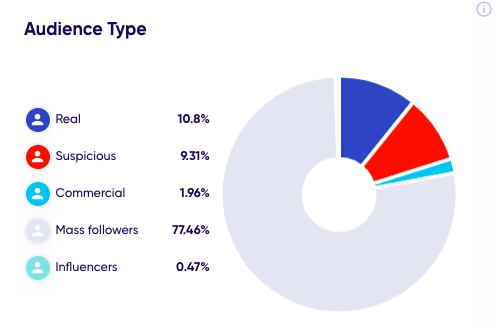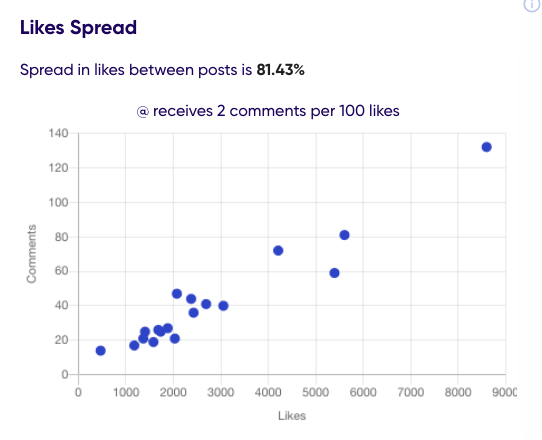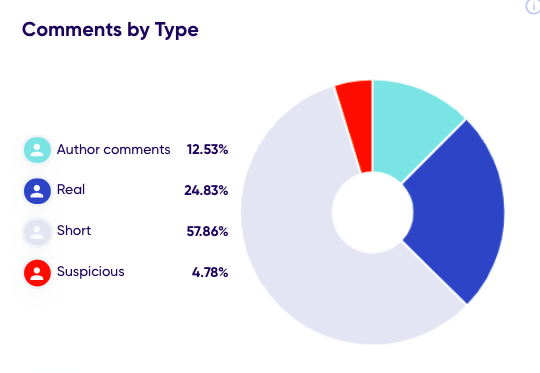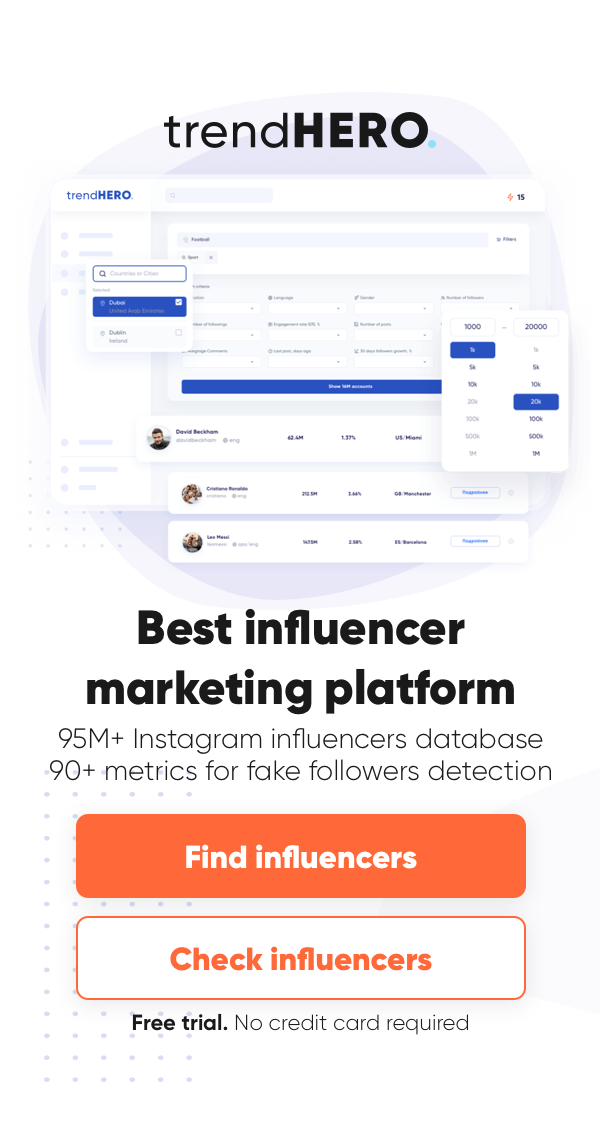Competitors push you to achieve more. Competitors understand your business the best. What does it mean? First and foremost, it means that you should keep a sharp eye on them: analyze their actions and use this data to your advantage. Competitors on Instagram are no exception. It’s vital to know who they are, what they do, and everything in-between.
We have compiled a guide on how to analyze competitors on Instagram to create a great social media strategy for your brand based on the insights. And, of course, make the promotion of your brand more efficient. Take a look!
Why is it necessary to conduct an Instagram competitor analysis?

We live in an era when everything has already been invented. A brand new idea is most likely a combination of two or some more old ones. I say this to the fact that competitors are a mine of inspiration, insights, and a cause for thought. Let’s break all the advantages of Instagram competitor analysis down point by point. What do you need to conduct it for?
1. Look through the promotion methods your competitors use
It’s interesting and useful to know what free and paid methods of promotion your competitors use on Instagram. They can attract the audience just with catchy content, or competitions, or targeted ads, mass following, influencer marketing, etc. In addition, if your competitors use paid methods, you can estimate roughly how much money they spend on them monthly.
2. Analyze the price policy
You should definitely know what your competitors sell, and for how much. Perhaps, they have additional services/products to make money on, and you have only one source of revenue. If your income stands still, perhaps, your offer is just more expensive than your competitors’?
Analyze prices, promotions, bonuses. All this data matters.
3. Clear up what type of content your competitors produce and post
It’s vital to analyze how many posts per day your competitors publish, what colour and style range they prefer, how they balance between a photo and video content, etc. A lot of interesting things are happening in Instagram Stories now. Looking at how your competitors design them, what topics they cover, what AR masks they have worked out, and actively use.
Based on this data, you can find out what content resonates with their audience (and yours too), and what is ignored. In addition, you can spy on the design methods, distinguishing features, and peculiarities. It will help you elaborate a great content plan to attract even more like-minded people.
4. Conduct the audience analysis
The audience is the most valuable asset on Instagram. If you analyze your direct competitors’ audience, you analyze your own as well. It means you need to take a very close look at them. Find out who they are, what they like and hate, where they work, what they do in their free time, what they are worried about, etc. The more info you can dig up, the better you will be able to communicate with your people.
5. Analyze TOV and how they communicate with the audience
The tone of voice can tell a lot about a brand. Analyzing your competitors’ style of communication, you will be able to understand what stories they tell, how they convey their messages to the audience, how they call people to action, encourage and motivate them. Are they friendly or official, fun or serious, modern or classic on social media? Do they use some special words in their texts? All these finds will assist you in improving your TOV or being convinced that you have already honed it to perfection.
6. Find the areas of improvement and growth points
If you get all the previous points together, one more will work out. Competitor monitoring helps you find growth points of your brand, and therefore, become better. Knowing your competitors’ strategies, you will understand where your brand is at the current stage as well as be able to build plans for the future.
Keep in mind: don’t copy-paste your colleagues. Use the data from the competitor analysis wisely. I mean, keep their strategies in mind but don’t perceive them as the ultimate truth. You have your own way to follow.
How to analyze competitors on Instagram?
There are two main methods to analyze competitors on Instagram: manually and using third-party tools. The first and the second have advantages and disadvantages, therefore, we will consider both.
How to do a competitive analysis manually

If you are curious, attentive to detail, and patient, this method of conducting social media competitor analysis will be a success. It might take over an hour for the first time. However, as soon as you know where to look and what to monitor, the analysis will come out faster.
1. Pay attention to Instagram BIO
How do your competitors describe themselves in a few lines? Have they included any hashtags and/or clickable links? Instagram BIO is a short version of brand positioning and can provide you insight into the essence of this or that company.
2. What about a visual presentation?
No matter what they say, the visual part of Instagram is more important for users than something else. People come there for aesthetics and visual treat, and then for everything else. Look what pics your competitors post, how they edit them, who makes content for them, etc. After leaving the profile of your competitor, think about why it looks like that and how visually attractive it is on a scale of one to ten.
3. Take a look at a content plan
Here, it’s necessary to understand what topics your competitors cover on Instagram, how often they publish posts, and at what time. Do they have a mix of photos, videos, infographics, or have just photos? Do they try to sell their products/ services in each post, or also have entertaining and informational publications?
4. Tone of voice
As we have already mentioned, it’s important to understand the style of communication of your competitors. Do they prefer short captions to long texts or vice versa? What call to actions they use? What emotions do their texts broadcast? Find the answers to these questions, and a lot will become clear. It’s a must for each brand to have its own voice, style, and tone to be heard and distinguished from others.
5. What about interaction?
Likes, comments, mentions are the signs to understand whether the brand is moving in the right direction or not. So, where are your competitors moving? Consider the type of comments (short, spammy, long), likes spread among the posts, video views, and photos a brand was tagged in. The situation in the comments can also provide you with a lot of insights: you can see various opinions of the audience on this or that topic, their reactions as well as understand what questions they willingly answer, what content resonates with them.
6. Who is among the followers?
The number of followers no longer matters. The quality of these followers is a completely different story. Do real people prevail among your competitors’ followers or fakes, perhaps? It’s easy to check tapping on “Followers” and scroll down a little bit. If you stumble across the accounts with suspicious names and without avatars, they are most likely to be bots. You can also check the audience authenticity in likes and comments. We have written more about running Instagram fake followers audit in this article.
7. Instagram Stories and Highlights
Stories on Instagram have recently become the main channel of communication with the audience. Do your competitors have a particular design of Instagram Stories? Do they use polls, quizzes, Q&A sessions? Have they created their branded AR filters? How do they engage with their followers via Instagram Stories?
Stories Highlights, or timeless stories, allow to highlight the most important moments that can be easily lost in the feed. Pay attention to the design of the Highlights icons of your competitors as well as what content they store there.
8. Who your competitors collaborate with?
As far as you know, Influencer Marketing on Instagram is blooming at present. What opinion leaders represent your competitors’ brand? Do they have brand ambassadors? What formats of advertising do they use? Having clarified such important details, you will know what influencers to attract to the promotion of your brand, and who are already taken by your competitors. Learn more about how to get influencers to promote your brand via this link.
9. Look through Active Ads
There is an opportunity to see the active ads on Instagram and Facebook of your competitors. Taking a look at them, you will find out what messages they are conveying at the moment, what they are offering, and what formats they are using.
- Open the Instagram app and go to your competitor profile.
- Tap on three dots in the upper right corner.
- Select About This Account in the menu, and you will get to the Account Information page.
- Tap on Active Ads.
- If there are some, you will get to the Facebook Ad Library and will be able to look through the ads there.
10. Hashtags matter
Spy on the hashtags your competitors apply under the posts, find out whether they vary them, and how many are put each time. In addition, try to clear out whether they have branded hashtags. If yes, find out whether they use them as navigation among particular content or not.
How to analyse Instagram competitors with trendHERO

For a complete and more in-depth analysis of your competitors’ Instagram accounts, we recommend using trendHERO. This method would be definitely much easier and faster than doing the same thing manually. The trendHERO tool provides over 90 metrics for analyzing Instagram accounts and can be boldly called a full-fledged Instagram analytics tool. It’s a great solution to track competition, and I am going to tell you why right away.
1. Similar influencers report
This feature within trendHERO tool greatly simplifies the competitor research. All you need to do is to enter your Instagram username in the search box and click on the “Top similar influencers” button. As a result, you will get a list of your competitors that you can analyse deeper with one click. I have collected top similar influencers to a fashion model and blogger Chloe Hayward. This is how the report looks:
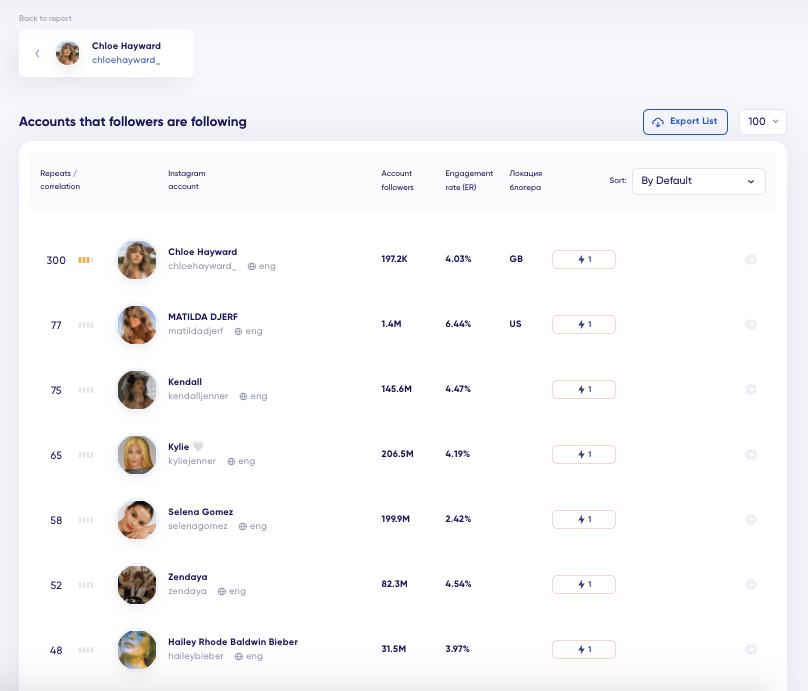
2. Audience Analysis
As soon as trendHERO generates a list of your competitors (look at point 1), you can conduct an analysis of each Instagram competitor profile. There are a lot of charts and graphs within trendHERO that give insights into the audience. Here you can get statistics about followers demographics; their interests; audience authenticity as well as audience type. If your competitors prefer to buy fakes and bots, trendHERO will let you know about it, marking the audience as suspicious and/or mass followers. There is also an opportunity to see the dynamics of followers growth and find out how many people unfollowed the account for the last 4 weeks.
3. Likes and Comments
In trendHERO you are able to analyze comments and likes. This will help you understand how much the audience is engaged, as well as assess the authenticity of comments and the ratio of likes to post frequency. A Likes Spread graph will tell you what posts were appreciated by the audience and what posts were not. If you have noticed sharp swings in this graph, I mean some posts got a lot of likes when others were completely unpopular, it might give a warning of cheating.
4. Top Mentions
Take a look at what accounts your competitors mention most often. There might be influencers, partners, or contractors they usually collaborate with.
5. Top Hashtags
We have already mentioned that it’s important to monitor what hashtags your competitors use. trendHERO will provide you this data on a separate chart, showing what hashtags are used most often in this or that account.
6. Ad Posts
This feature in trendHERO helps you to view posts marked as “ad” in any account. All you need to do is to enter the username of your competitor’s account, the brand you are interested in, or any keywords, and get the selection of ad posts. There is also an opportunity to search by additional parameters: the number of followers, comments, likes, views, publication date, a specific location, etc.
This feature is really great for analyzing how competitors work with Instagram influencers. You will be able to see what influencers your competitor collaborates with, assess its strategy for working with opinion leaders, and even the launch dates of campaigns if you sort ad posts by date. You can also look through the pics that influencers took with a brand’s product, and make a note of the ideas for your future influencer marketing campaigns.
7. Tracking
Here is one more advanced feature by trendHERO that I can’t fail to mention.
Tracking will help you keep abreast of follower growth, the effectiveness of blog posts and advertising. As for competitors monitoring, there are:
- the graph Post Comparison of likes and comments to track which of them attracted the most attention;
- the graph Engagement Rate will give you insights on how it has been increasing or decreasing;
- Top hashtags graph will show you frequently used hashtags as well as the average number of likes, comments, and ER for a post where this hashtag was applied,
- etc.
There are a lot of other useful graphs in the Tracking section such as Ads efficiency to see how this or that advertising influenced follower growth as well as Best time for posting, Top posts, Post frequency graph, etc.
Tracking is a feature to dive deeper into your competitor’s account and analyze it to the fullest.
In a word, trendHERO is an easy-to-use and very powerful tool that allows you to take a closer look at your competitors and get all the necessary data about their actions on Instagram. Just one click and an in-depth report is before your eyes.
What to do with the results of Instagram competitor analysis?
No analysis will be valuable without further action. The best thing you can do with the received data is to apply them for your brand’s improvement. Think well of what you do better, and where you are inferior to competitors, what you can do to strengthen your image and become the best in the niche.
Look through the common tips and tricks to make the most of competitor monitoring:
- Add more life to your account, take more pictures with people (employers, clients). Instagram users prefer to see a product/service in action. No one is interested in polished pictures taken from photo banks.
- Write engaging texts to make your audience discuss, and share their opinions.
- Don’t bypass influencer marketing. Tracking bloggers that competitors collaborate with, you will be able to select the same, or vice versa, others for your campaigns. And if your competitors are unfamiliar with influencer marketing, this is your chance!
- Try to find something that your competitors aren’t already using. Instead of copy-pasting, focus on searching for something that your competitors missed.
- Generally speaking, competitor analysis can push you to rehash your social media strategy. You would hardly have noticed your gaps if you hadn’t analyzed your competitors. Such an analysis can point at your weaknesses and turn them into growth points.
Analyze your competitors to distinguish your brand from them and emphasize your brand identity.
Conclusion
Social media competitor analysis might be both a daunting task and an absorbing one. Using specially designed tools for tracking your competitors’ performance on Instagram may significantly sweeten this process. Nevertheless, no matter whether you conduct an analysis manually or with the aid of third-party tools, the most important thing is to do it great, and successfully apply the gained data in practice for the good of your brand.
We also recommend to read
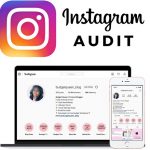 How to Run an Instagram Audit in 2023 (Free Audit Tools Inside!)
How to Run an Instagram Audit in 2023 (Free Audit Tools Inside!)  How to Find and Reach Instagram Target Audience in 2023
How to Find and Reach Instagram Target Audience in 2023  How to Access Instagram Follower Count History (2023)
How to Access Instagram Follower Count History (2023) 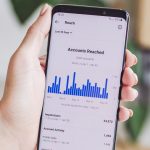 Ultimate Guide To Reach Vs Impressions
Ultimate Guide To Reach Vs Impressions 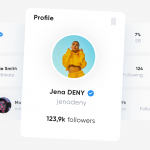 How can you use ‘Share a list’ feature to improve your influencer campaigns
How can you use ‘Share a list’ feature to improve your influencer campaigns 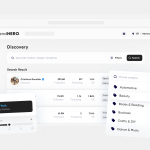 How to find influencers in new countries and niches in trendHERO
How to find influencers in new countries and niches in trendHEROInstagram Engagement Rate Calculator For Free
Check any influencer's Engagement rate and analyze his or her followers growth history
Other free tools: Follower Count History, Instagram Follower Count, CPM Calculator
